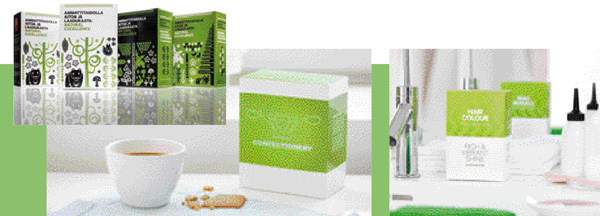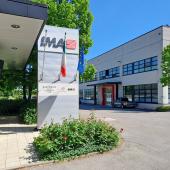Paperboard: lighter weight, higher quality
Reduced weight, same thickness and an ever whiter coat: Metsä Board invests in technology and challenges the market with paperboards that are more and more competitive in terms of results and sustainability.
Thanks to technological improvements to the group’s paper mills (resulting from investments in installations in 2011-2012), Metsä Board has significantly altered its paperboards Avanta Prima, Simcote and Carta Elega, with a focus on making them lighter.
The first and most important outcome is that the concern has managed to further expand its products’ potential outlets for packaging in the food, beauty and hygiene sectors, as well as those of luxury goods and graphics applications.
A second, but by no means secondary, effect is that the concern can now guarantee end users significant economies, and in the spirit of environmental compatibility, which will be available starting in June. Massimo Caviola, manager of the Finnish group’s Italian subsidiary, gives details below.

Metsä Board has proven itself to be a excellent producer of paperboard from fresh forest fibers. How and why did you work on these recent developments?
We first of all wanted to enhance yield and increase the whiteness of the coat, in line with the needs and demands of our users.
And confronted with the improved characteristics of the individual paperboards, we are able to guarantee high performance on printing and converting lines: in fact, it will be possible to use lighter boards while at the same time achieving competitive results. And the environmental and economic advantages of reduced weight are not to be underestimated.
Metsä Board’s new offer will be available in June. Which objectives did you set in its development?
Firstly to offer our users valid alternatives capable of satisfying even the most advanced requirements; in other words, we wanted to make materials capable of guaranteeing the best performance during printing and converting, in order to obtain high quality products that communicate their value through sight and touch.
And the new grades of Avanta Prima, Simcote and Carta Elega fully respond to these needs.
The strength of the new offer is lighter materials for the same thickness and performance. What are the advantages of this characteristic?
In order to produce our cellulosic materials, light or rigid paperboards, we employ fresh forest fibers. It’s thanks to the nature of these fibers that we are able to lighten the paperboard while guaranteeing the stiffness necessary for different uses: when used for the first time, they are integral and resistant.
The real advantages of lighter packaging are countless, starting with the production process upstream, which proves more sustainable (water and energy consumption is reduced). But there are also savings in cost, considering the reduced transport cost for lightweight materials, not to mention the reduced quantity of packaging waste at the end of its life cycle. All this enables obtaining an advantageous carbon footprint without the paperboard having to forego the properties that make it indispensable in many sectors: its capacity for protection and its high yield in printing and converting.
PAPERBOARDS, IN PRACTICE
With thickness and stiffness unaltered from older versions, Avanta Prima now features reduced weight. This improvement was developed with pharmaceutical packaging in mind, and it proves suitable for digital printing.
Significant improvements have also been made to the yield of Simcote which, already offering an excellent balance of stiffness and density, proves even more suited to production of containers for food products.
With Carta Elega, the whiteness has been enhanced, making it particularly suited for packaging beauty products.

















